|
If you have a large
size, bluish green, mound
forming hosta, odds are that it has 'Sieboldiana', somewhere in its
background. Perhaps the classic
of this type is H. 'Elegans'
which has been around for over a century.
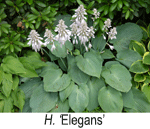 The average size mound of this
hosta
will be about 24 inches high and over 60 inches wide at
maturity. It will have near white flowers with a pale lavender
mid-tepal stripe from late June into mid-July. The leaves are
broadly ovate, with thick substance and are heavily corrugated.
It emerges blue-green in the spring due to a waxy cover or bloom on
the leaf. However, the wax may melt away as the summer progresses
resulting in a dark green colored leaf by fall. The average size mound of this
hosta
will be about 24 inches high and over 60 inches wide at
maturity. It will have near white flowers with a pale lavender
mid-tepal stripe from late June into mid-July. The leaves are
broadly ovate, with thick substance and are heavily corrugated.
It emerges blue-green in the spring due to a waxy cover or bloom on
the leaf. However, the wax may melt away as the summer progresses
resulting in a dark green colored leaf by fall.
According to
The Hostapedia by
Mark Zilis (2009) there is some confusion about the actual
characteristics of 'Sieboldiana'. The true forms that he
has observed do not always match those of
H. 'Elegans'.
They have less corrugation in the leaves, are
not as blue and form clusters of flowers that are less dense
than those of 'Elegans'.
Zilis (2009),
continues "The true 'Sieboldiana' is
uncommon in hosta collections and nurseries. Most plants with
this label are actually green-leaved seedlings of H. 'Elegans' and are not the true
type...I
attempted to find 'Sieboldiana' in the wild or
wild-collected specimens. No collector I encountered had ever
seen it...Even veteran plant-hunters, who had found hundreds of
other unusual hostas in the wild, had never seen it."

At
the January 19, 2013 Hosta Scientific Meeting in Lisle,
Illinois,
Mark Zilis said that
Japanese
plant collectors believe that they have found plants of the species that
resulted in 'Sieboldiana',
in a remote part of one of the Japanese islands. He said that
the discovery is yet to be scientifically confirmed but he hoped
that a more definitive declaration would be coming in a year or
two.
"H. 'Cucullata'= 'Sieboldiana' " - Also, this may have been sold
as Mackwoods No. 1 at one time.
 So, it sounds as if, when someone
talks about a "Sieboldiana" type hosta, they are really
talking about
H. 'Elegans' and its
many,
many
seedlings and sports. So, it sounds as if, when someone
talks about a "Sieboldiana" type hosta, they are really
talking about
H. 'Elegans' and its
many,
many
seedlings and sports.

 Bill Meyer in
The
Hosta Journal (2003 Vol. 34 No. 1) states that, "'Sieboldiana'...is
virtually the opposite of
H. sieboldii, they both add large leaves,
rounded leaf shapes, rugosity and heavy substance. They are also the origin of
the wax that makes green hostas appear blue and of
lutescent yellow coloring
(all other species produce
viridescent yellow seedlings). Like
H. sieboldii,
they yield large quantities of seed...Slow growth and poor division formation
are at the top of the list of negative traits. In addition, they flower early,
at a time when few other species bloom, often adapt poorly to hotter climates,
go dormant in the summer and lack new leaf production during the second half of
the season. Some would consider them overused." Bill Meyer in
The
Hosta Journal (2003 Vol. 34 No. 1) states that, "'Sieboldiana'...is
virtually the opposite of
H. sieboldii, they both add large leaves,
rounded leaf shapes, rugosity and heavy substance. They are also the origin of
the wax that makes green hostas appear blue and of
lutescent yellow coloring
(all other species produce
viridescent yellow seedlings). Like
H. sieboldii,
they yield large quantities of seed...Slow growth and poor division formation
are at the top of the list of negative traits. In addition, they flower early,
at a time when few other species bloom, often adapt poorly to hotter climates,
go dormant in the summer and lack new leaf production during the second half of
the season. Some would consider them overused."
An article by
W. George Schmid in
The
Hosta Journal (2009 Vol. 40 No. 3) states that, "Over
the last 40 years I have learned that any plant with
'Sieboldiana' or 'Tokudama'
in its background cannot stand drought."

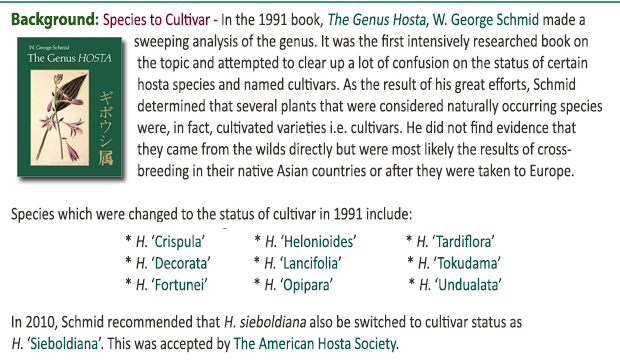
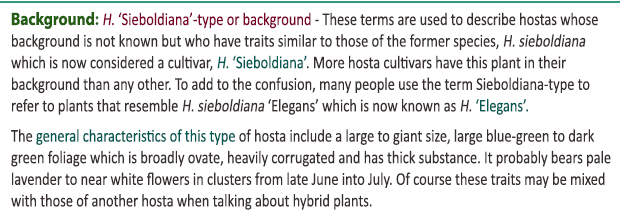


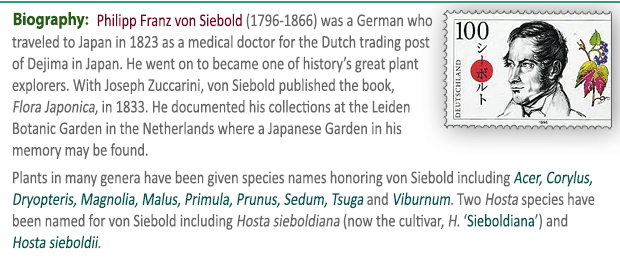

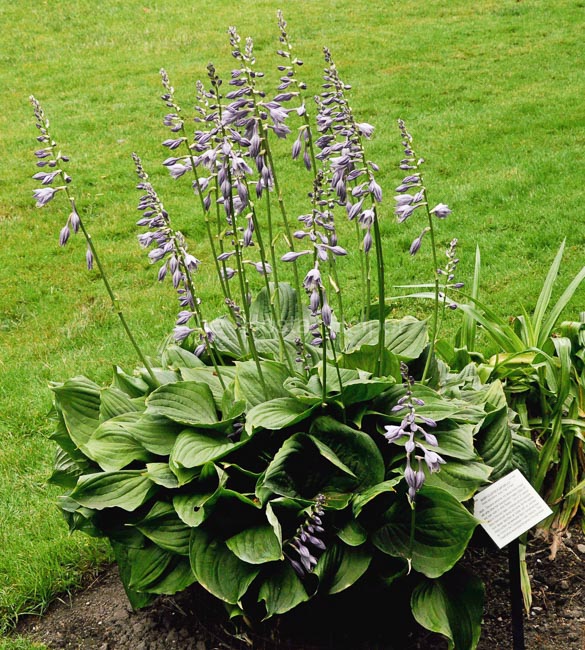
-Edit.jpg)

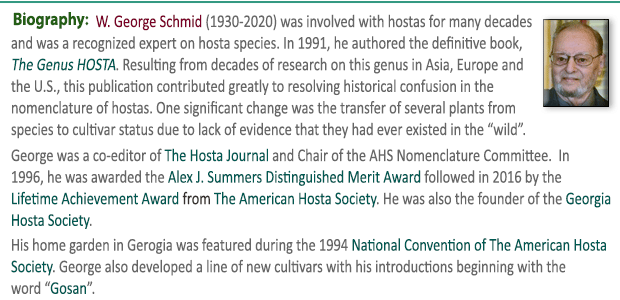
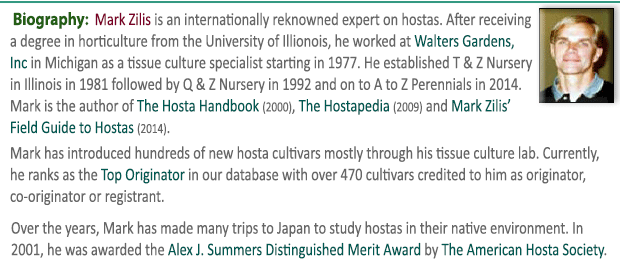



|



